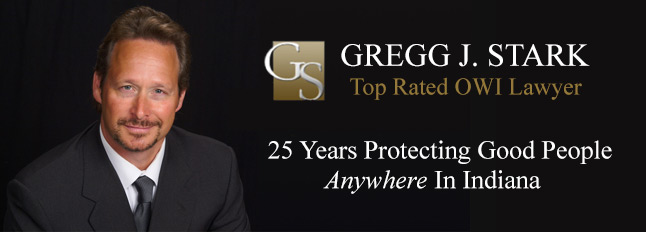Many nationwide were taken aback by the recently released report underscoring the growing dangers of texting while driving on America’s roadways. The publicly released report implies that texting while driving has now overtaken driving while intoxicated as a foremost threat in proximately causing fatal traffic accidents.
When this report was publicly broadcast I had taken to the blogosphere with the prediction that anti alcohol groups such as Mothers Against Drunk Driving (MADD) and other associated groups would soon mount an effort to discredit such public pronouncements. Why? Because it is my belief that the very existence and employment of many on the dole of such anti dui advocacy groups may soon see their fund raising efforts curtailed once the realization dawns on the public that a more urgent threat to traffic safety has now emerged; texting while driving.
More significantly, the proposal raises the ante for anti alcohol organizations in their attempt to distract attention from competing roadway dangers that interfere with their true crusade; the eradication of all public alcohol consumption through the mechanism of drunk driving legislation.
Perhaps mere coincidence, but within days of the released report on texting while driving an out of the blue suggestion by the National Highway Traffic Safety Administration (NHTSA) was unveiled for the consumption of all media outlets that would listen.
In reclaiming what MADD would suggest is the rightful focus of public attention on drunk driving, anti alcohol supported surrogates within NHTSA proclaimed that a new reduced .05 alcohol content should be the new standard by which American citizens should be considered impaired when operating a motor vehicle.
DUI arrests and fatalities have been decreasing with each passing year. With the bombardment of never ending media commercials on television and radio in combination with increased traffic enforcement, there is no citizen alive who has been immune to the efforts to prevent drunk driving.
Despite no seeming national public outcry to reduce the present impaired bac standard of .08, many in the legal community were left dumbfounded as to the motivations behind the timing of this attack on this heretofore universally acceptable standard of .08 impairment under present dui laws throughout the country.
One must remember that the present national uniform standard of .08 bac for presumptive alcohol impairment was forced upon many states who previously deemed a bac of .10 as a sufficient standard by which to presume impairment when operating a motor vehicle.
After MADD and its progeny mounted an all out assault on Congress for a reduced standard of impairment, Congress in its infinite wisdom capitulated to the prohibitionist sensibilities of a small political block of alcohol abolitionists and compelled a national standard of .08 to presume alcohol impairment when driving on all states.
Threatened with the cessation of necessary federal highway and roadway funding on individual states who deigned to oppose the reduced national measure despite state laws to the contrary, all states eventually fell in line with the present .08 BAC presumed legal limit for alcohol impairment for those operating a motor vehicle.
At the time many cynics predicted that this reduced .08 alcohol standard for driving impairment was not considered a long term victory for MADD and associated groups but merely the initial step toward its ultimate goal of a zero tolerance policy for public alcohol consumption altogether.
While those who are aligned with anti alcohol groups in America are by no means uniform in the degree by which they wish to return to the era of prohibition, one must recognize that at a certain point too many successful political organizations care more for the survival of their cause and the financial support that accompanies their efforts and less on the principaled cause(s) that may have enabled the group to be successful in the first place.
To MADD and their army of zealots who have crusaded against the dangers of drunk driving for the past few decades I say, “mission accomplished.” Though I disagree with many of the positions, policies and agendas of such groups, I can no doubt respect the fervor by which they have successfully educated the public on drunk driving dangers and skillfully manipulated political leaders into adapting national standards by which to enforce uniform drunk driving policy.
With that said I now say, “enough.” Your mission to reform national drunk driving policy has now been completed and successful. While society will never eliminate isolated tragedies involving alcohol impairment, such tragedies have now been reduced to the point that any further attempt to reduce public alcohol consumption treads upon prohibitionist dogma that runs counter to the majority of public opinion on the issue of responsible public alcohol consumption.
Further transparent attempts to eliminate responsible public alcohol consumption altogether no longer evidence a rational approach toward highway safety but a broader prohibitionist ideology bent on eliminating the consumption of alcohol in all of its forms.
Such an organizational attack at abolishing alcohol was expressly rejected through the repeal of prohibition decades ago. As such, the present backdoor approaches of anti alcohol organizations to chip away at the established freedom to enjoy a wine, beer or liquor in public is in truth a manipulated attack on the American hospitality industry.
Let there be no mistake, the present reduced bac initiatives no longer merely target the American motorist but have broadened their scope to threaten the economic viability of the hospitality industry nationwide. While prohibition outlawed alcohol consumption and distribution, the proposed .05 bac standard is an insidious attempt to target any and all distributors of alcohol.
The economic welfare of all restaurants, hotels and other entertainment venues within local communities nationwide are no doubt in the crosshairs of anti alcohol groups. Legislative proposals such as a .05 imparment level are in large measure motivated by the chilling effect such a reduced impairment standard would have on the willingness of responsible motorists from consuming alcohol in public at all. It is of little concern and perhaps the objective of such reduced bac proposals to cripple the ability of private businesses who furnish alcohol to remain profitable. In turn, the employment of countless Americans and the local economies of communities throughout America dependant upon the hospitality industry would be adversely affected.
Whatever the motivation for this reduced .05 bac proposal, may I suggest that in light of the new threats posed by texting while driving, the powerful hiearchy of MADD demonstrate that its true focus is on a prioritized effort to promote roadway safety in all of its forms, and not a misdirected focus on reduced safety threats that serve only the cause of self preservation.







